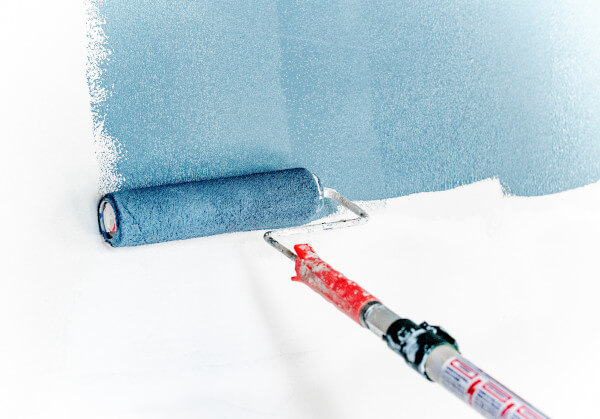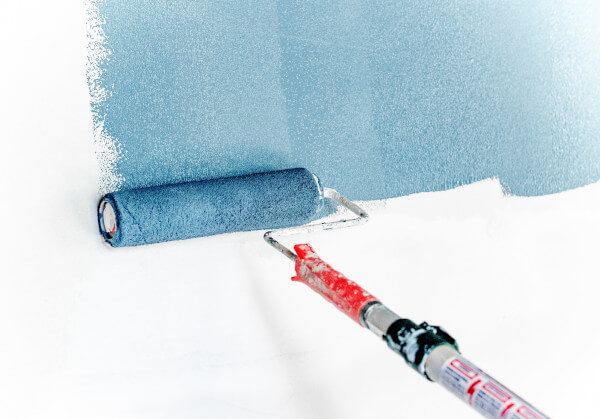How to Fix a Screen Door

>

iStock
If the screen in your sliding door has a hole, it’s time to repair it. Keep the insects out with a few simple tools and some new screening.
Maybe the dog wanted to tell you that he needed to go out, or maybe the cat decided to sharpen her claws. Or you were distracted and didn’t see the sliding patio door until you walked through it. Whatever the reason, your screen door is now damaged—instead of preventing insects from entering, large birds can come and go as they please.
You could take the door down to your local hardware store and have them replace the screen, but why deny yourself the pleasure of installing a new screen? Here’s how to do it.
What You Need to Fix Your Screen
When you go to the hardware store or home center, you’ll find an assortment of screening materials in a few different sizes, everything from 24- to 96-inches wide. You also get to choose the style of the screen to match the existing screens at home. Do you need fiberglass? Black? Charcoal or silver? A fine weave that keeps fruit flies out and is easy to see through? Or how about a heavy-weave pet screen that will stand up to lions, tigers, and bears? There’s also aluminum that is rugged and long-lasting. Just make sure that any roll you choose is big enough to cover the door.
While you’re at the store, you’ll also want to pick up a few other essentials. You’ll need new spline material that’s about the same diameter as the original, so bring your original sample as a gauge. You’ll also want a splining tool, a sharp utility knife, and some spring clamps.
Steps for Fixing a Screen Door
Step 1: Prepare a work surface
First, you’ll need a work surface to support the door or screen panel. This surface could be a workbench, a pair of sawhorses covered with some plywood, or even your picnic table.Remove the screen door and lay it out on the work surface with the spline side up. (The spline is a thin piece of flexible plastic, usually black, that’s jammed into the perimeter slot to hold the screen in place.)
Step 2: Measure
Now measure the width and length of the door. Plan on buying screening material wide and long enough so you have an extra 2 inches or so of the screen on all sides.
Step 3: Pry out the spline
Use a flat screwdriver or knife to pry out one bit of the spline, then pull the rest out. Remove the screening and throw it away but keep a small sample of the spline material to bring to the store.
Step 4: Unroll the screen material over the door
Give yourself a couple of inches of overlap, or as much as possible, around the perimeter of the door. Use spring clamps to secure the screen to the door; start on one long side, clamping the opposite side to make the screen taut, then clamp one short side.
Step 5: Cut the spline
Cut the spline into lengths that roughly match the screen’s perimeter, giving yourself a little extra to trim later. Starting on one corner of the unclamped short side, use the spline tool’s concave wheel (it fits snugly over the spline) to press the spline material into the screen and spline groove.You may find that you need to roll the wheel back and forth as you go to set the spline. With your other hand, keep the spline aligned in front of the tool. Work slowly towards the opposite corner, making sure that the screen is pulled tight and the spline is pushed down all the way into the spline groove. As you progress, try using a spring clamp just in front of your work to keep the screen taut as you install the spline. When you get to the opposite corner, use the utility knife to carefully trim the excess spline, cutting away from the screen, toward the outer edge of the screen panel.
Step 6: Repeat on the long sides
Now move your spring clamps from the opposite short side and spline that section. Once the short sides are complete, repeat the process on the long sides. When splining the last side, try to smooth out any wrinkles as you go. Here, and any time during the process, if you end up with a sag or wrinkle, you can always pull the spline out in that area, make everything tight, and re-install the spline. Now go back over the entire perimeter and check that the spline is pushed down all the way.
Step 7: Trim excess screen
Once the entire perimeter is splined, you’ll need to trim the excess screen. Put a new sharp blade into the utility knife. Start in one corner of the spline, and as you did when trimming the spline, orient the blade so you don’t accidentally slice the screen. With a bit of pressure, cut slowly toward yourself along the outer edge spline. (You may have to bear down a little more when cutting aluminum.) Don’t rush this part—you also don’t want to cut the spline. Or yourself. Remove the waste.Congratulations! You have a new screen door. Put the door back in its place and enjoy the breeze. Now that your interest is piqued, if you’d like to tackle making a custom window screen, check out This Old House editor Chris Ermides’ video here.
Did you miss our previous article…
https://www.tampa-bay-homes-guide.com/?p=1531
